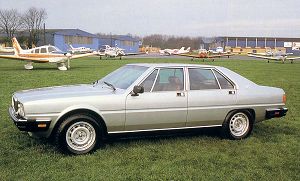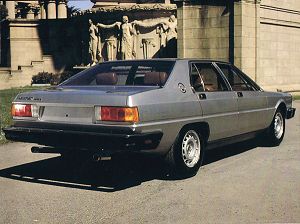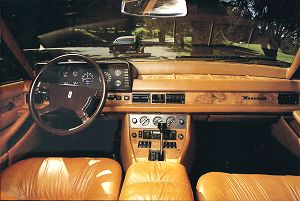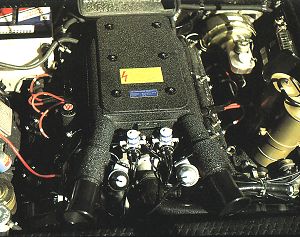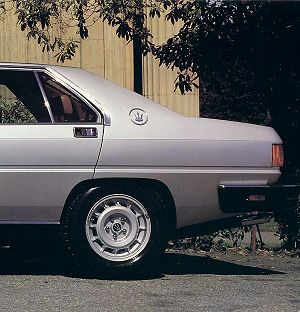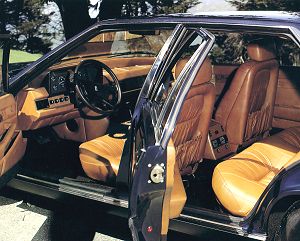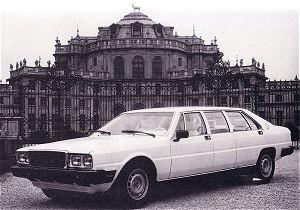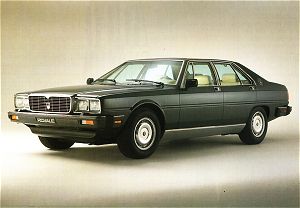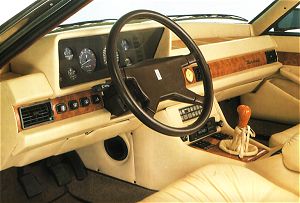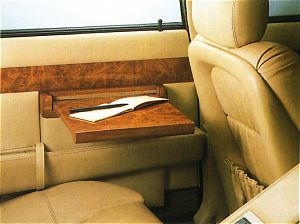| The Quattroporte III
"Quattroporte III... and at last V8 power unit is back!" |
|||
|
|
|||
|
De Tomaso, the new owner of Maserati, still believed that the Quattroporte saloon was the answer to the needs of many customers in world's GT market. His 'gut feeling' proved to be right, for within two years of production it was Maserati's best selling car, accounting for over 60% of total production. |
|||
|
In spite of its considerable size, Giugiaro's classic styling gave the Quattroporte III the visual concept of strength and speed; a long imposing bonnet, once more housing a V8 engine, sloped down to a large trapezoidal chrome radiator grille adorned with the traditional trident, flanked by pair of twin rectangular headlamps. |
|||
This Maserati press pack, which contains information and specifications on the Quattroporte Limousine, was given out at the 61st Turin International Motor Show in 1986. The pack includes large, glossy, black and white photographs. |
 |
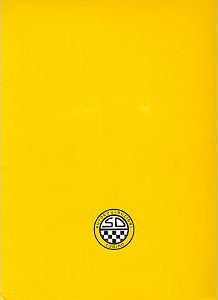 |
| "As a correction, the Maserati Quattroporte Limo that was used in the movie "The Running Man" was a different limo. That limo was built in the US by a company called Ultra Limousine located in California. Sincerely, Nigel." |
|||
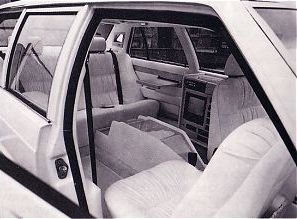 |
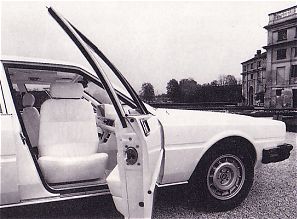 |
||
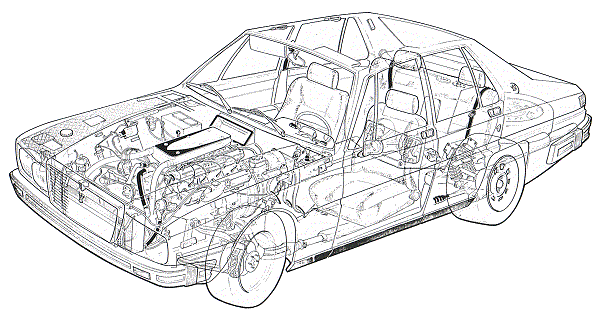 |
| TECHNICAL DATA - AM 330 | |
| Body type | 4-door 4/5-seater Luxury Saloon |
| Production years | From 1979 to 1990 |
| Engine | Front engined V8 cylinder @ 90° |
| Bore and stroke | 88 mm X 85 mm (93.9 x 89 mm) |
| Engine capacity | 4136 cc (4930 cc) |
| Compression ratio | 8.5:1 |
| Maximum power | 255-bhp @ 6000 rpm (280 bhp @ 5600 rpm) |
| Distribution | Four overhead camshafts, two valves per cylinder |
| Induction system | No 4 twin-choke down-draught 42 DCNF Weber carburettors |
| Ignition | Single electronic |
| Lubrification | Forced with pressure pump |
| Transmission | Rear wheel drive |
| Differential | Sensitork |
| Clutch | Dry single plate |
| Gearbox | Manual 5-speed and reverse (4.9-litre version with automatic transmission) |
| Chassis | Integral body |
| Front suspension:- | Independent wheels, coil-springs, telescopic shock-absorbers and anti-roll bar |
| Rear suspension:- | Independent wheels, telescopic shock-absorbers and anti-roll bar |
| Brakes | Hydraulically operated ventilated disc brakes on all four wheels |
| Wheelbase | 2800 mm |
| Wheel tracks | Front 1525 mm Rear 15253 mm |
| Tyres | Front:- 215/70VR x 15 Rear:- 215/70VR x 15 |
| Dry weight | 1900 kg |
| Overall length | 4980 mm |
| Overall width | 1790 mm |
| Overall height | 1350 mm |
| Maximum speed | 220 kph (230 kph) |
| Models constructed | 2100 |
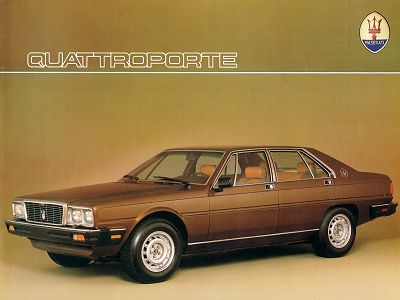 |
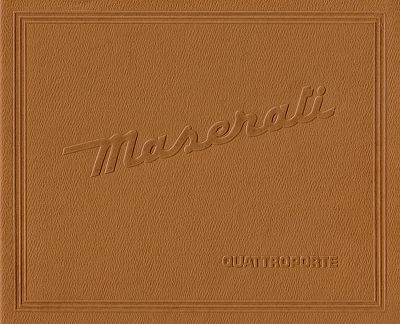 |
 |
|
To enter Enrico's Maserati Pages CLICK HERE! Copyright: Enrico's Maserati Pages - © 2003-2004. All rights reserved. |
